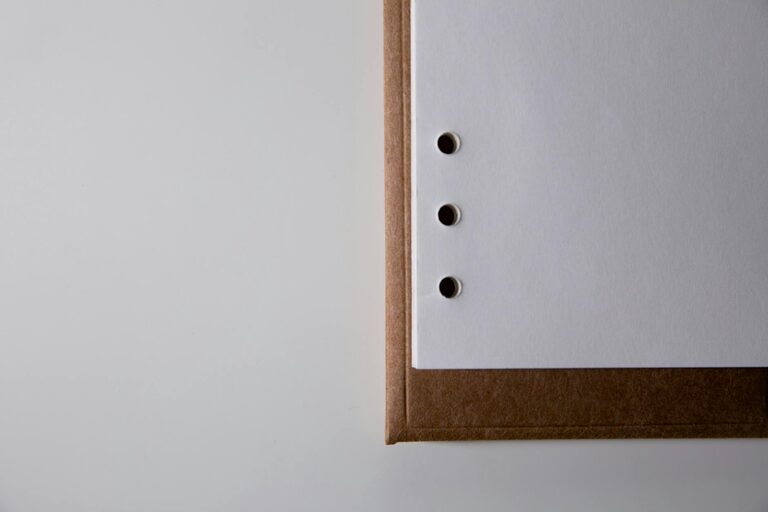
Simple Ways to Reduce Household Paper Clutter Effectively
Keeping your home organized can sometimes feel like a never-ending task, especially when it comes to managing paper clutter. Bills, receipts, mail, school papers, and various documents tend to pile up quickly, making your living space look disorganized and chaotic. Fortunately, reducing household paper clutter doesn’t require a massive overhaul—just some simple, consistent strategies. In this post, we’ll explore practical ways to cut down on paper clutter and maintain a tidy, stress-free home environment.
Why Paper Clutter Happens
Before diving into solutions, it helps to understand why paper clutter accumulates. Papers often pile up because:
– We don’t have a dedicated place to store or sort them
– We postpone dealing with incoming documents
– Many papers aren’t immediately necessary but seem important to keep
– We receive more paper than we need, such as catalogs, flyers, or junk mail
Knowing these reasons can guide you in creating better habits and systems for paper management.
Step 1: Sort and Purge Regularly
Create a Sorting Station
Designate a small area in your home where you can sort through incoming papers daily or weekly. This could be a tray, basket, or small table near your entryway or kitchen.
Categorize Incoming Papers
Sort papers into these basic categories:
– Action: bills to pay, forms to complete
– File: important documents to keep
– Recycle: junk mail, expired coupons, catalogs
– Shred: sensitive documents with personal information
Doing this regularly helps prevent piles from building up.
Purge What You Don’t Need
Be honest about what to keep. For example, old bills already paid, outdated manuals, or expired warranties can usually be tossed. Use a shredder for papers with personal details.
Step 2: Digitize Documents
Scan Important Papers
Consider scanning documents like receipts, warranties, tax records, and medical information. Digital copies save physical space and are often easier to organize and find later.
There are many smartphone apps that simplify scanning, letting you upload directly to cloud storage like Google Drive, Dropbox, or your preferred location.
Set Up Digital Filing
Organize your digital files into labeled folders by category and date. Be consistent, and back up your files regularly to avoid losing important information.
Choose Paperless Options
Whenever possible, sign up for electronic statements and bills. Most companies offer paperless billing, helping reduce incoming paper.
Step 3: Organize with Simple Storage Solutions
Use a Filing System
If you prefer to keep physical copies, invest in a small filing cabinet, file boxes, or accordion folders. Label each section clearly so papers have a home and are easy to find.
Keep Only Essentials on Display
Limit the papers you keep on your desk or kitchen counters to current, actionable items only. Clear surfaces create a neater appearance and reduce stress.
Create a Mail Station
Set up a spot for incoming mail with labeled trays or baskets for sorting. This prevents mail from scattering around the house.
Step 4: Develop Paper-handling Habits
Process Mail Daily
Avoid letting mail pile up by going through it daily or at least a few times per week. Immediately recycle junk mail and place bills in your action folder.
Review and Update Regularly
Set reminders every month or quarter to clear out your filing system. Shred or recycle old papers you no longer need.
Use a To-Do List or Digital Calendar
Keep track of deadlines from papers (such as bill due dates) digitally. This cuts down on printed reminders and sticky notes.
Step 5: Reduce Paper Use at the Source
Opt Out of Unwanted Mail
You can contact companies to stop receiving unsolicited catalogs and credit card offers, reducing one source of clutter.
Choose Digital Notes
Use note-taking apps instead of paper notebooks or sticky notes, which tend to accumulate over time.
Print Only When Necessary
Before printing, consider if a paper copy is truly needed. Save drafts and working documents digitally to avoid unnecessary printing.
Bonus Tips for Maintaining a Paper-Clutter-Free Home
– Label Everything: Clear labels help you stick to your filing system.
– Use a Shredder: Keep a shredder accessible for quick disposal of sensitive papers.
– Involve the Family: Teach household members sorting basics to keep everyone on the same page.
– Keep a Recycling Bin Handy: Having recycling within reach speeds up decluttering.
Final Thoughts
Reducing household paper clutter is achievable with simple habits and organization. By sorting regularly, digitizing documents, creating effective storage, and minimizing paper usage, you’ll create a calmer and more efficient living space. Start with one or two steps and build your routine gradually for lasting results.
Take control of your paper clutter today—it’s a small effort with big benefits!
